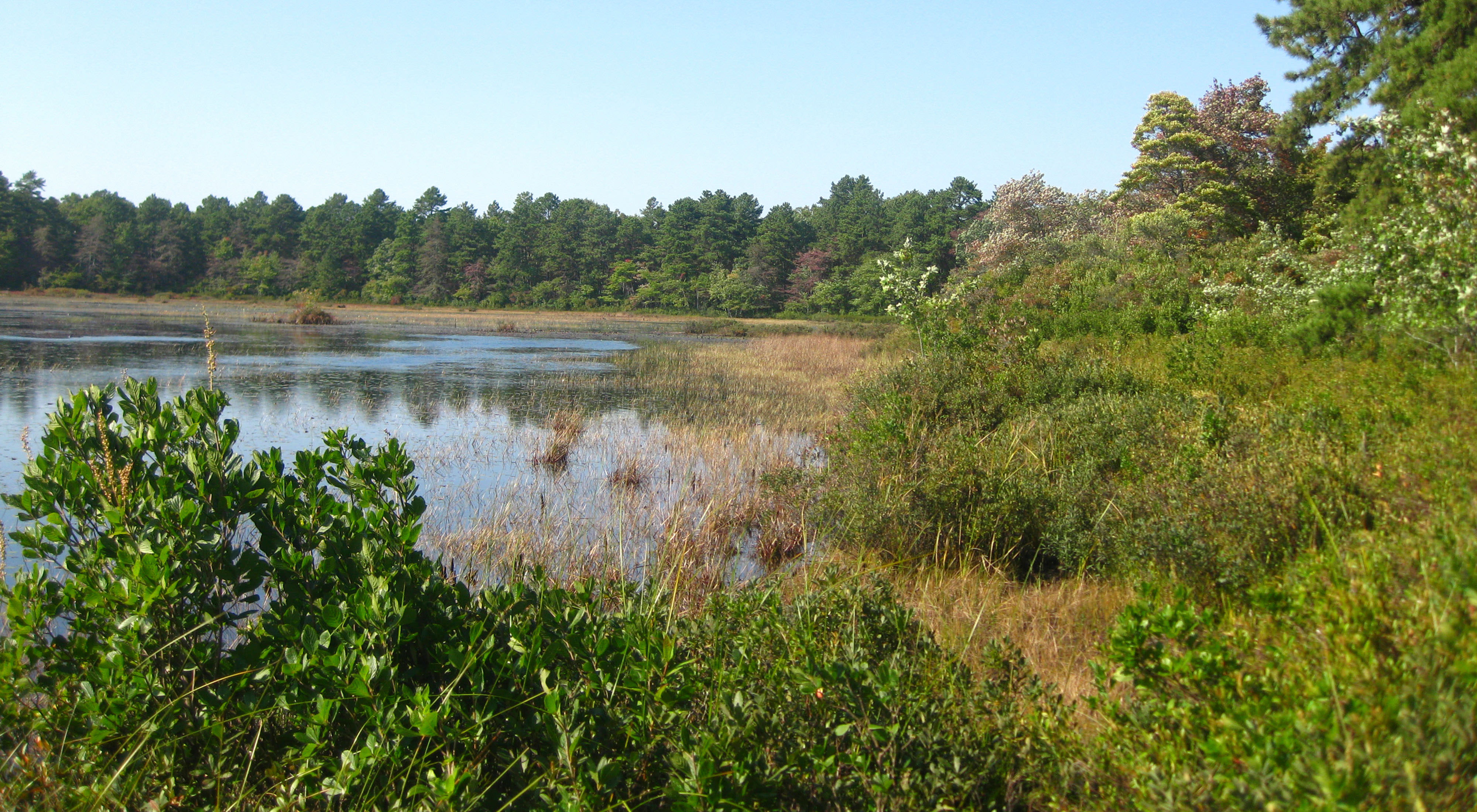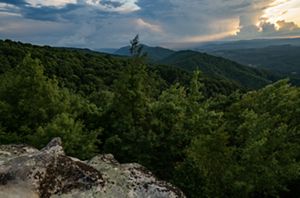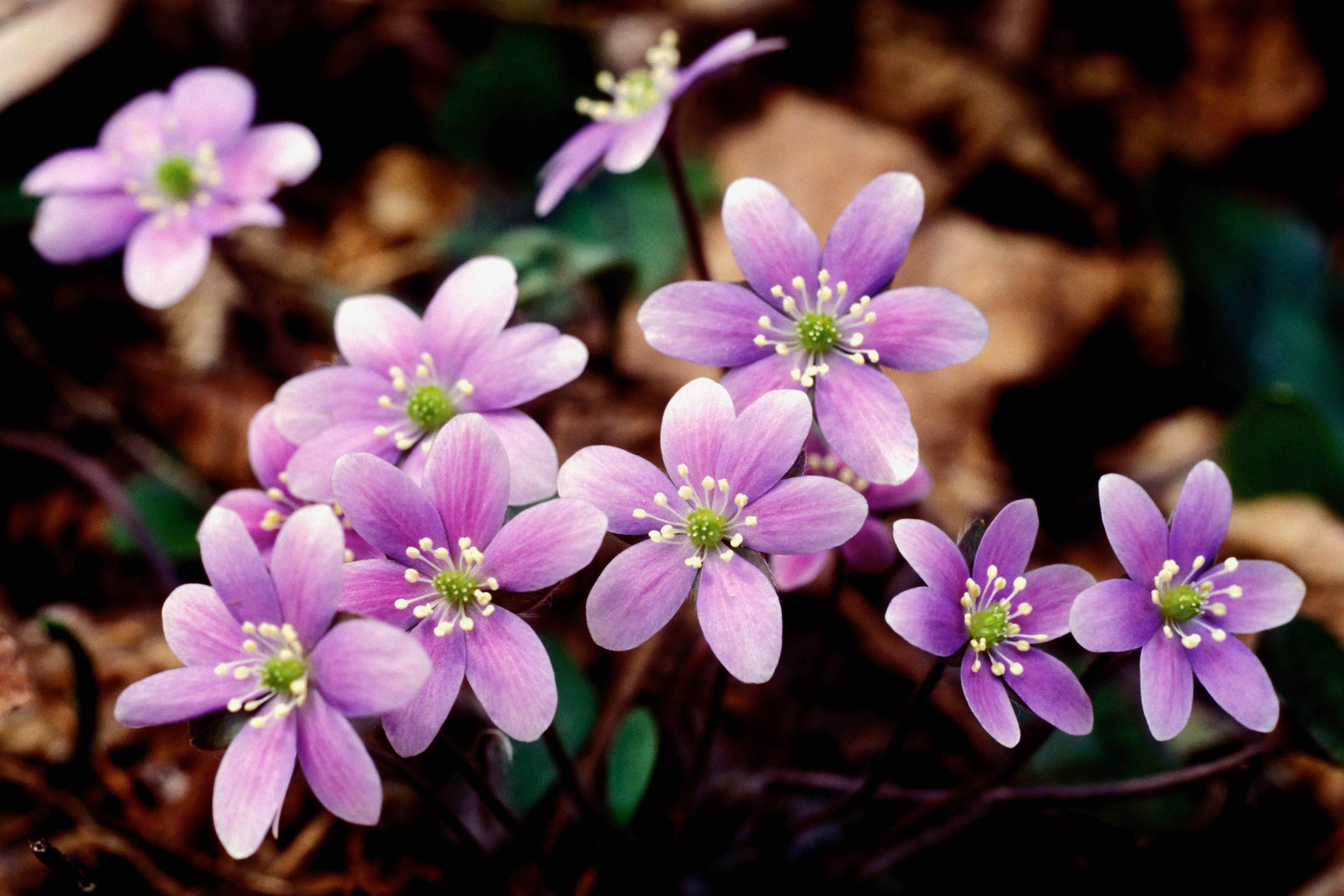From Jaguars to Waterfalls: One Warbler’s Northbound Odyssey
By Kevin Munroe, Long Island Preserve Director
A tiny black and white bird with a blazing orange throat perches high in the treetops, watching a jaguar, the largest cat in the Americas, prowl in the shadows below. The season is changing, and this blackburnian warbler feels an urge to leave his winter home in the steamy Peruvian tropics. His mission: to fly 4,000 miles to find a mate and start a family, while living off the bounty of a northern summer filled with insects. Dozens of species of neotropical migrants, including blackburnian warblers, winter in the tropics, between Florida and Bolivia, and spend their summers in North America’s Appalachian Mountains. Their arduous journeys are filled with hazards, including predators, harsh weather, skyscrapers with deadly glass windows and a lack of stopover habitat.

Fortunately, The Nature Conservancy’s network of preserves offers refuge, shelter, clean water and ample food. Several hundred sites, including 160 preserves in New York alone, are critical migration stopovers as these tiny jewels make their seasonal expeditions. The spring destination for many migratory birds is the Appalachians, which stretch from the hills of Alabama north into Canada, with New York as a key connecting point.
Migratory Rest Stops: Critical Places for Refuel and Refuge
Together, let’s imagine what this extraordinary northbound flight might be like. The blackburnian warbler survives a stormy trip across the Gulf, then settles in before dawn for a life-saving rest on the Georgia coast. He falls asleep next to an Eastern whip-poor-will who makes her spring home in TNC's Calverton Ponds Preserve on Long Island. A cluster of monarch butterflies, like the thousands he saw gliding north in Mexico, vibrate their wings to stay warm as they prepare to fly to Moody Forest Preserve in Georgia.



After traveling through the southern Appalachians for weeks, often flying all night and into the morning, the winged wonder lands in Virginia’s highlands. He’s joined by flocks of other neotropical warblers, including bay-breasted, chestnut-sided and cerulean warblers he met over farmland in North Carolina. They are also joined by several northbound hoary bats whose 16-inch leathery wingspans dwarf those of the warblers and whose sharp white teeth shine in the moonlight. Luckily, hoary bats eat only insects, so bats and birds briefly share the same nocturnal flight. Just days away from his destination, the blackburnian makes one last rest-stop in central New York to nap and feed before his final flight north.
He lands and recuperates in the West Branch Preserve with hundreds of other colorful (and exhausted) neotropical migrants: orioles, flycatchers, vireos, hummingbirds, thrushes and even a pair of broad-winged hawks that wintered in Venezuela. He rests in forests of maple, oak and pine trees above a fast-moving stream and hunts in the treetops for early-season insects like gnats, flower flies, tiny native bees and tumbling flower beetles.

He also practices his bright, high-pitched, buzzy song, throwing his head back, spreading his mouth wide and shaking his chest and sides to throw his song as far as possible from his sunlit perch. For many birders, spring has not arrived until they’ve witnessed this spectacular show. Body rested and belly full, he completes his last leg north in May and lands in a towering hemlock.

He was born here in Albany County four years ago and has made it back three times to raise a family, each time meeting an equally astounding and well-traveled mate. He’s returned to TNC's Hannacroix Ravine Preserve, a 415-acre gem with hemlock, yellow birch, sugar maple and a carpet of native wildflowers in full bloom. The globe-trotting blackburnian is finally home. But in just a few months, he and his new family will point their sharp bills south, join millions of other birds and throw themselves into yet another, millennia-old odyssey back to the land of the jaguars.

Conservation Status
Most birds are threatened by climate change, and blackburnian warblers are no exception. Some models predict they could lose 54% of their breeding range if the average global temperature increases by 1.5 degrees Celsius. However, as of 2024 their populations are relatively stable. Clearing of their winter forests in South America, human disruptions along their migration route and the effects of climate change on the Appalachians are some of the greatest threats they face.
Join Our Newsletter
Learn more about our work in New York.




